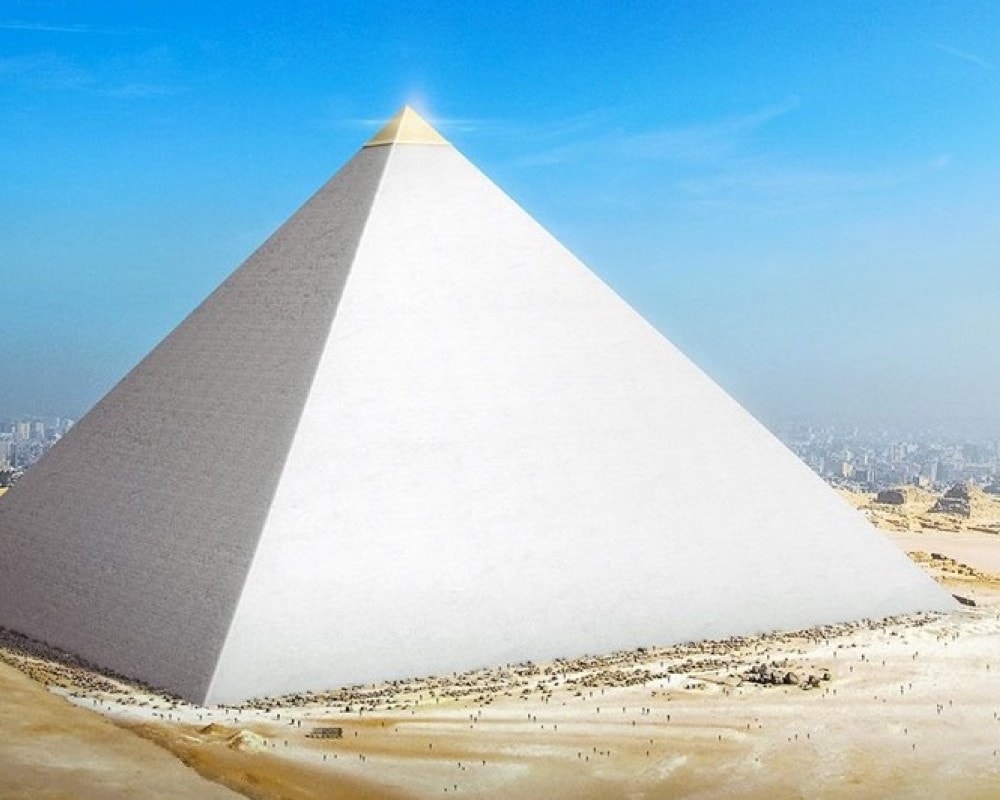
The ancient Egyptian pyramids are among the most enduring monuments in the world. Standing for thousands of years, the pyramids of Giza are a perfect testament to this endurance. An example of human ingenuity and unbelievable engineering, these man-made marvels were raised on the sands to mark the tombs of ancient Egyptian pharaohs. But over the centuries, the structures have changed, largely caused by weather changes, repurposing of in-demand materials by construction workers, and, unfortunately, looting. So what was the original structure of the pyramids at the time of their building? Let’s find out.
The Original Look

According to historians, the ancient pyramids of Egypt, erected in Giza and elsewhere, didn’t originally look sandy brown like we often see them today. Instead, a layer of shiny sedimentary rock covered those structures. As per the assistant professor of the Czech Institute of Egyptology at Charles University in Prague, Mohamed Megahed, fine and shiny white limestones originally encased all the Egyptian pyramids, giving the structures a smooth and polished layer, shining bright under the blazing Egyptian sun. Also, the tops of the Giza pyramids, which hold nothing today, originally hosted ‘pyramidions.’ As Megahed explained, those were capstones covered in electrum, a mix of precious silver and gold. Those pyramidions would have given the impression of big pointy jewels sitting on the tips of the pyramids. Altogether, that original look of the pyramids was undoubtedly a sight to behold!
The Remaining Examples

While most pyramidions are lost over time, a few surviving specimens are preserved in several museums, which reveal that the pyramidions were covered in religious imagery and carved hieroglyphics. Also, the National Museum of Scotland displays one of the original limestone casing blocks from the Great Pyramid of Giza. The oldest and the largest of all the standing pyramids in the region of Giza, the Great Pyramid of Khufu was commissioned during the reign of Pharaoh Khufu, circa 2551 B.C. to 2528 B.C. According to the museum, around 6.1 million tons of limestone were used during its construction alone. However, those casing stones were stripped later to be repurposed for other construction works under the following Egyptian rulers, as was the case for most pyramid casing shells. Today, you can see the remaining of these original limestone casings on a few Giza pyramids, like on the peak of the Pyramid of Khafre. But obviously, they look much more weathered than their former splendor.